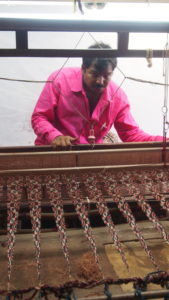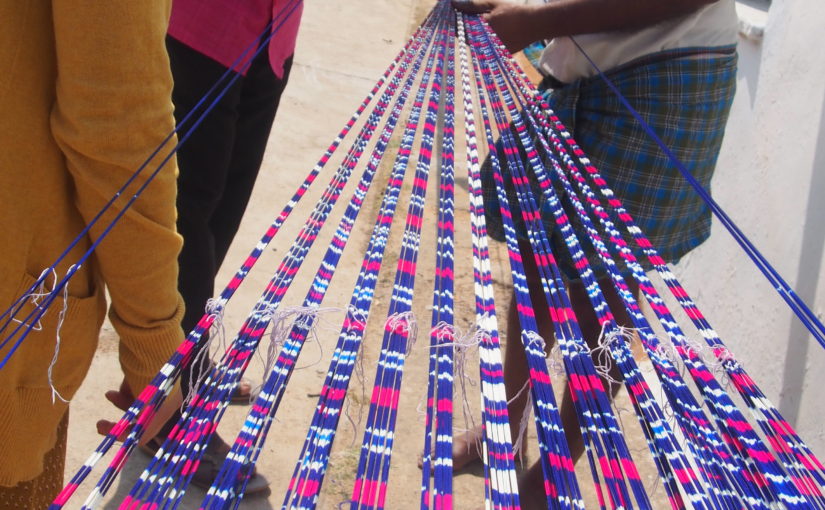India’s many textiles have always merited admiration for their vibrant colors and inventive prints. One such print has seen increased popularity in both the home decor and fashion industry in the past decade, from Pottery Barn bedding to a new spring print for Thirty-one.

Ikat is a textile with a unique and varied range of patterns, which lends itself equally well to the creation of a statement chair in a family room as it does to a fashionable dress for a day out on the town.
While much of the ikat we see today is simply in print form, true ikat is only created through a centuries old, highly demanding process. Fortunately, the location of my study abroad program places me in one of the ikat producing areas of India.
Early Friday morning, I took off to Puttapaka, one of the many traditional ikat weaving villages outside of Hyderabad.
Comprised of either silk or cotton, Ikat’s engaging mix of geometric and organic imagery is created using a tie-dyeing technique before it is woven. It will come as no surprise, therefore, that the art of creating ikat is a process involving numerous time-consuming steps before the weaving itself begins.
The pattern is first conceptualized on grid paper before binding the bundles of thread. For small areas, a simple thread is used to block the dye, while wide rubber bands are used to protect larger areas.
Depending on the pattern, this process may be repeated up to three times to incorporate multiple colors. The thread must be completely dry before rebinding and dyeing with the next color.

This process is carried out early in the morning in order to take advantage of the intense sunlight of the day to quickly dry the bundled thread. After the pattern is created, all that is left to do is weave it on one of the family’s looms.
The residents of Puttapaka not only skillfully weave scarves, sarees and fabric yardage for sale in the government warehouse in Hyderabad; they work on commission for designers around the world.
Creating ikat is a family affair, and the work is therefore split amongst its members. Traditionally, only men wove. However, while in the village I met a young woman who quite proudly declared she had taken up weaving herself.
The women of each family largely complete the remaining work of pattern making, binding, dyeing, bobbin winding, etc. The children are trained in the art of ikat weaving from an early age.
At the home of one weaver, his daughter quite enthusiastically showed off her notebook full of graphed ikat patterns she had created. Ikat is more than a family occupation; it is also the source of the family’s pride.
It is said you appreciate something more once you know where it comes from. As a farmer’s daughter, I have experienced this firsthand in regards to the food set on the table every day.
After visiting Puttapaka and witnessing the arduous process involved in creating ikat, I experienced the same feeling of newfound appreciation for this unique weave.
